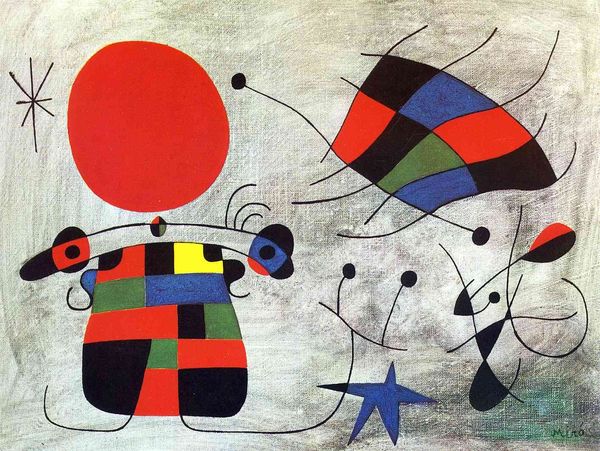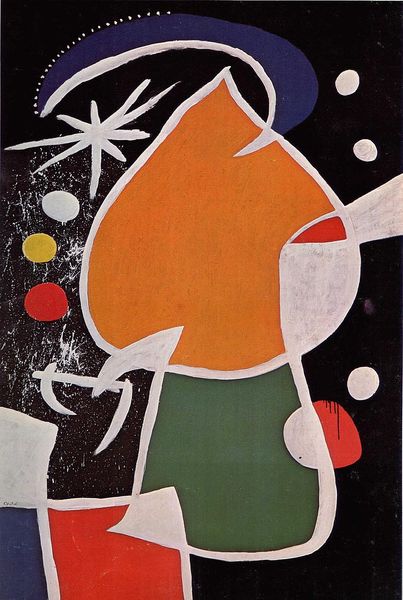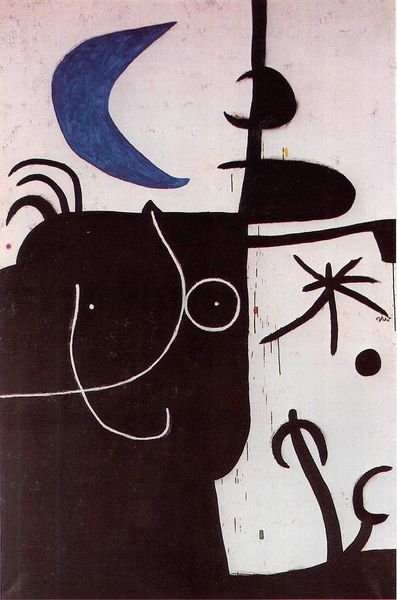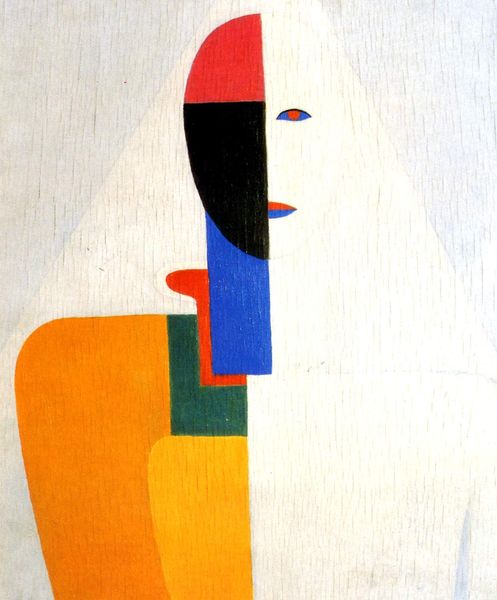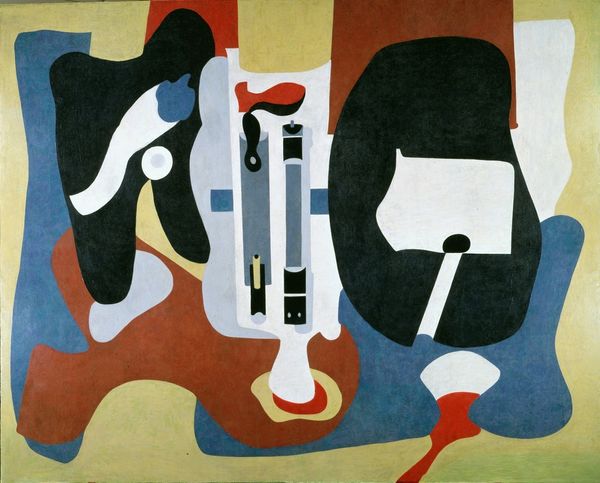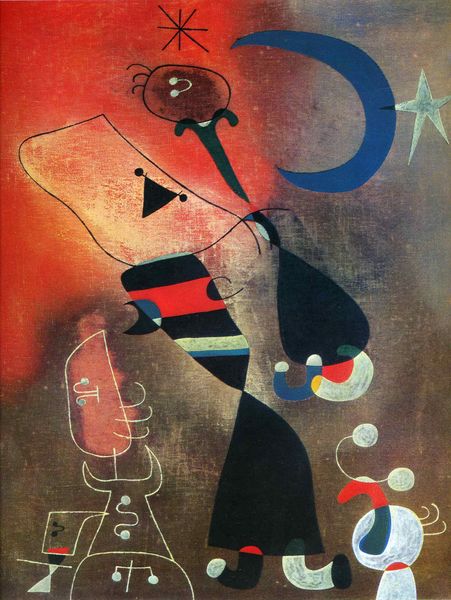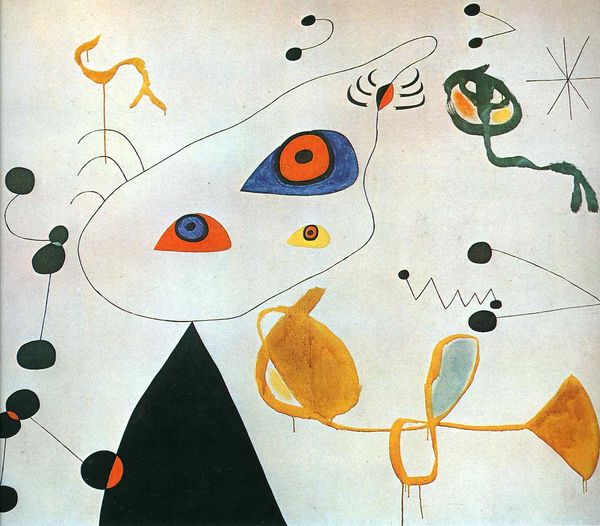
painting, acrylic-paint, mural
#
organic
#
painting
#
acrylic-paint
#
form
#
flat colour
#
geometric
#
biomorphic
#
abstraction
#
line
#
cartoon style
#
surrealism
#
mural
#
modernism
Copyright: Joan Miro,Fair Use
Curator: Gosh, that thing is unsettling...like a brightly coloured nightmare scribbled on a wall. Editor: Well, let's try to unpack that reaction. What you're responding to is Joaquim Gomis (Mural), an acrylic piece created by Joan Miró in 1948. You might initially perceive chaos, but what do you see if you spend more time with it? Curator: Okay, fine...I do like that the colours are quite happy. They almost seem too lighthearted for what I imagine to be the intent behind it. You know? The shapes remind me of something in my dream diary if that makes sense... They give off strong biomorphic vibes. The stark, bold flatness of colour...I don't know if that helps make more sense of my initial reaction? Editor: It's an entirely valid reading. Miró was a master of simplifying form to its essence and these organic shapes and clean lines harken back to a deep primal sensibility that transcends mere aesthetics. Notice how these disparate shapes almost communicate a subconscious language to us as observers...a visual vocabulary almost! How is that achieved here? Curator: Perhaps it is intentional...he is trying to use something inherent in human psychology and create meaning with that as the basis of that relationship between observer and art. The lines are suggestive and free and the piece breathes...The flat colour also seems to create the depth and a 3D sense through only 2D attributes...amazing really. Like building an alphabet out of emotional detritus. I dig it...do you think his titles actually make a difference? Or does it speak more powerfully on its own? Editor: Interesting question. Titles can of course shape our perception, providing a framework through which to interpret a work, though with someone like Miró, I lean towards the art existing perfectly independent of any linguistic prompt. The strength lies in his non-verbal communication, using abstraction to evoke pure feeling. As he said himself, he sought to, “murder painting”—to liberate it from the conventional restraints of representation. Curator: A successful assassination in my opinion! The kind where the victim continues living and starts a completely different life, totally unrecognisable yet utterly themselves. Editor: Exactly! A transformation. What began as disquiet has revealed, I think, something essential about accessing the non-rational depths of ourselves.
Comments
No comments
Be the first to comment and join the conversation on the ultimate creative platform.
